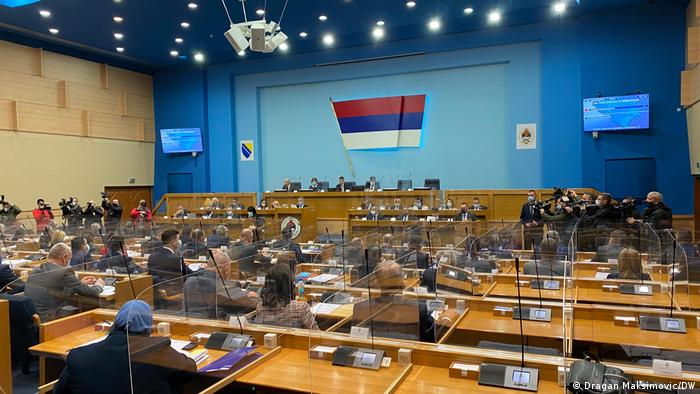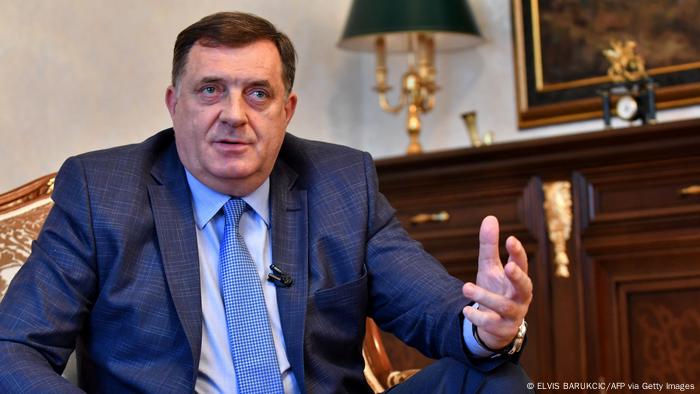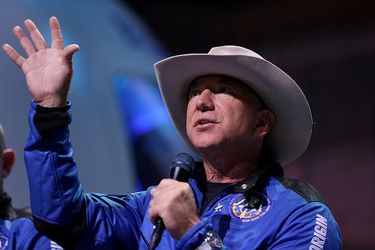I'm Black But Look White. Here Are The Horrible Things White People Feel Safe Telling Me.
Miriam Zinter
Thu, December 9, 2021

The author.
I was outside my house gardening a few weekends ago when a neighbor, whom I had known for almost 30 years, stopped by so I could pet his large, fluffy dogs. I took my gloves off, squatted down to give the dogs a really good scratching around their ears and felt the sun on my back. What could be better? And then my neighbor said: “Why do you have a ‘Black Lives Matter’ sign on your front lawn when all those people do is kill each other?”
My lovely day screeched to a halt.
“You know I’m Black, right?” I said, standing up as tall as my 5’4” frame would allow, the sun shining on my blond hair. I continued to pet his dogs, because I needed the comfort of petting dogs at that moment, and because I needed to keep my hands busy so they didn’t slap that man’s face.
After the usual back and forth of him saying “No!” and me saying “Yes!” and then him trying to gauge exactly “how Black I was” by asking which of my parents was Black and me replying “Both,” we had a very uncomfortable conversation about racism.
I told him about my father’s struggles to get an education because guidance counselors and admissions agents would not accept Black people into community colleges or SUNY programs in the 1950s and ’60s. I told him that even though my father was a veteran, he could not be approved to use the GI Bill for college or buy a house, since no one would process his paperwork because he was a Black man. I told him that people painted “Go Home Nigger” on the back of our home when my parents finally saved enough money to build a house in the suburbs of Syracuse, New York. And I told him how “Black Lives Matter” calls attention to the fact that Black people are considered less than white people ― and that needs to stop.
I also told him if people don’t understand that Black lives matter, Black people will continue to be murdered by the police and denied opportunities by the establishment. We will not be allowed to participate in the “American Dream,” and we will be made to feel that this is somehow our fault, when it is in fact the fault of a racist society with the full support of our government.
This isn’t the first time I’ve had to have this conversation. Encounters like this have been going on for a very long time for me.

The author's parents on their wedding day in 1963. (Photo: Courtesy of Miriam Zinter)
Both of my parents are Black but have white ancestors. Those recessive white genes were passed on to me, and I was born very light-skinned, with blue eyes and light, wavy hair. This was not a surprise. In both of my parents’ families there are “white” babies who pop up each generation. I have aunts, uncles and cousins on both sides of my family who are also white-presenting.
There is the story of my grandmother’s cousin Neville, who left the family in the 1940s to pass for white so he could join the Army and fight in World War II. He married a German girl, returned to Syracuse and never returned to being Black. Family members would see him on the streets and they would look past each other. He was lost to us because he chose an easier way ― and forsook his ancestry. Neville became a cautionary tale for me. I never wanted to be like him.
There is also the story of a great-aunt, Annie Mother, who would pass as white to purchase properties and then sell or rent them to Black family members and other Black families who could not find decent, affordable housing. I wanted to be like Annie Mother, so I pursued a career in social justice, specifically issues related to housing.
My parents originally tried to purchase a home in Syracuse in the 1960s. Most of the houses they made offers on had deed restrictions that stated the home could not be “sold to Negros.” Determined to own their own home, they decided to build a house, and found some land in a subdivision in Liverpool, New York, where the builder was happy to sell to them. Despite this good news, they soon learned they couldn’t get approved for a mortgage. My dad had a good job at General Electric and my parents had savings, but none of this was enough, because they were Black.
My dad accepted a transfer to a position in Alaska, because he could earn double what he’d make in Syracuse. My mom and I moved in with my grandmother for a year and my mom banked all of my dad’s checks. When he returned, my parents paid cash to have their house built in Liverpool.
This was the same house on which people painted “Go Home Nigger.” They did this when we already were home ― there was no other “home” to go to. We lived in a white neighborhood, and I went to a school where all the other students were white. Before I started kindergarten, my parents had “the talk” with me. If you don’t know about “the talk,” let me explain it to you. “The talk” is about race. It’s about being Black in a world run by white people, where white people make the rules. In order to survive, let alone thrive, you need to know you are Black and know what that means, even if you present as white.
My parents were worried. This was 1969. People knew we were Black, and that I would be starting school in a district where there were no other Black children. I didn’t look Black, but I am Black, so we figured I could and would be subjected to racist actions by my peers. We were prepared for groups of white parents to gather at the school to shout at me. Or spit on me. My parents needed me to understand that if this happened, it didn’t mean I was bad. It meant the adults were bad ― and that I’d need to rise above like Dr. King had done.

The author and her sister Suzette being swung by their mom in 1968. (Photo: Courtesy of Miriam Zinter)
In our home, Dr. King was whom we strived to be. Even at 4 years old, I knew who he was. I was taught King’s principals of nonviolence. My parents marched on Washington with King and hoped for a better world for me. I set off for school the next day, prepared to walk through a gauntlet of screaming hatred. I was on the lookout. But there didn’t seem to be anything happening. If any protesters had been there, they probably wouldn’t even have known I was Black. With my blond braids and my sparkling new outfit from Sears, I might have walked right by them. I was ready to learn ― and learn I did. But just because there weren’t protesters doesn’t mean there weren’t challenges.
My kindergarten teacher did not feel it was appropriate for a Black child to learn and play with white children. She left me inside the classroom on my own while the other students played. I stood by the window and cried. My parents complained to the principal ― a child of Italian immigrants ― and he stepped in. I was then permitted to play with my classmates. Worried that my teacher would not engage me in the same ways she did with the other students, my parents worked with me on my alphabet, math and reading every night after dinner. I excelled.
When we moved from Syracuse to Rochester, New York, our new neighborhood was also largely white. I didn’t even find this strange. I fit in and made very good friends, some of whom I am friends with to this day. But I always knew I was Black, and forgetting who I was simply wasn’t an option.
In middle school, my history teacher told the class that if we really wanted to insult Black people, we should call them “Uncle Toms.” In high school, one student came dressed as a klansman for Halloween, carrying a noose. Another student, wearing blackface and a loincloth, ran around in front of him. When the few Black students and a number of our white classmates complained to the principal about it, we were told we needed to “develop a sense of humor.” Another student, who would later become a teacher, called me a “white nigger.” I found myself constantly defending affirmative action, busing and desegregation with friends and classmates whose parents thought that if Black people “infested” their white world, chaos would ensue.
Many years have passed since then, but sadly, this madness hasn’t stopped.
My neighbor, the one who asked me why “Black lives matter,” is not the only one who has felt comfortable asking me such a question or making a statement rife with racism.
White people think I am white too, and therefore feel safe saying all kinds of horrible things they might not say publicly. I’ve had people tell me it “disgusts” them to see interracial couples. They’ve told me they don’t understand why Black neighborhoods look so “ghetto,” and that Black people are “animals” or “thugs.” Many of these people are educated, and hold jobs or positions that give them some form of power or influence over Black people. They are doctors, judges, lawyers, social workers and politicians.
That’s frightening.

The author (far right) and her sisters, Karina (left) and Suzette, listening to their dad read a bedtime story in 1969. (Photo: Courtesy of Miriam Zinter)
In every instance where I’ve encountered racist rhetoric, I have made it my business to speak up. I have told (or reminded) these people that I am Black. I have told them my family’s story. And I have done whatever I could to educate them about the systems of racism that exist in this country.
Sometimes they say: “But you’re different!” Then I ask them if other Black folks they know are also “different.” When they say yes, I ask them: “How are all the Black people you know ‘different’? When are you going to realize that we are not different? That you have been misled into believing that Black people are somehow bad, and that what you see with your own eyes ― these Black people you know, and know are not different or bad ― are good people like you?”
And that floors them.
There is a purposeful and strategic force dedicated to segregation and racism. There are people who benefit from Black people and white people remaining in conflict. When people of different races live together and truly want to know and understand each other, it is harmonious. But when races are separated, it breeds suspicion and distrust. It becomes “us versus them,” and it weakens us as a nation.
Living as a Black woman who looks white has allowed me to experience white privilege firsthand. Because people assume I am white, it is assumed I am honest, smart and trustworthy. Many times I have thought to myself: If I looked Black, how would these people treat me? And I have known, without a shadow of a doubt, that I would be treated with disdain or suspicion, or as a criminal. I know in many instances that if I looked Black, the police would have been called to question me. And this sickens and angers me. How many of our Black brothers and sisters have had the police called on them simply for the act of living their lives?
As a nation, we need to stop this. The best way to achieve change is to accept and learn about our racist past and the injustices visited upon our Black citizens. It’s deeply concerning that people are protesting the possibility of our country’s history being accurately taught in schools. The only way for America to be great is to accept all of our citizens at face value, and the only way to do that is to understand our intertwined roots ― our history and all the pain and tragedy that exists within it ― and face this, together, head-on.
Miriam Zinter is a Black woman who presents as a white woman. She began her career as a community organizer, was the executive director of a not-for-profit neighborhood organization, became the senior housing programmer for the City of Rochester and now works in the housing finance sector. She serves on a number of boards that serve people who are homeless and people who are poor. She is married, with two adult children and a spoiled shiba inu dog. Her parents live down the street from her, and she values every day she has with them. She has two sisters whom she loves very much and speaks with every day. She loves animals, comedy, books, food and wine. You can follow her on Twitter at @MimZWay unless, she says, “you are a hateful troll ― then just move on ― and live your own life.”
Do you have a compelling personal story you’d like to see published on HuffPost? Find out what we’re looking for here and send us a pitch.
This article originally appeared on HuffPost and has been updated.































